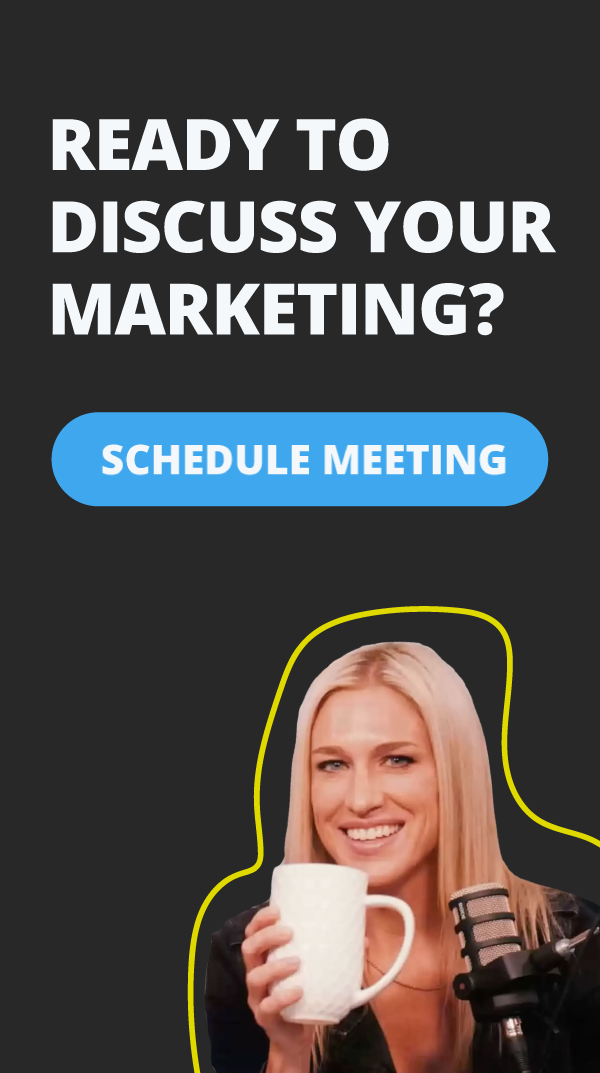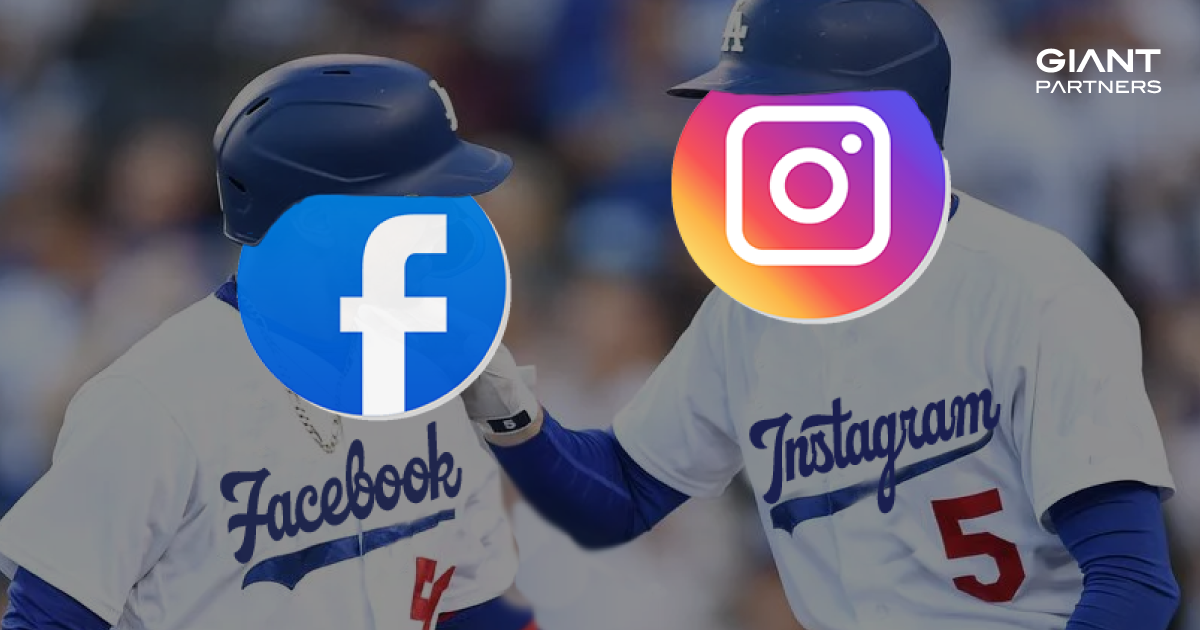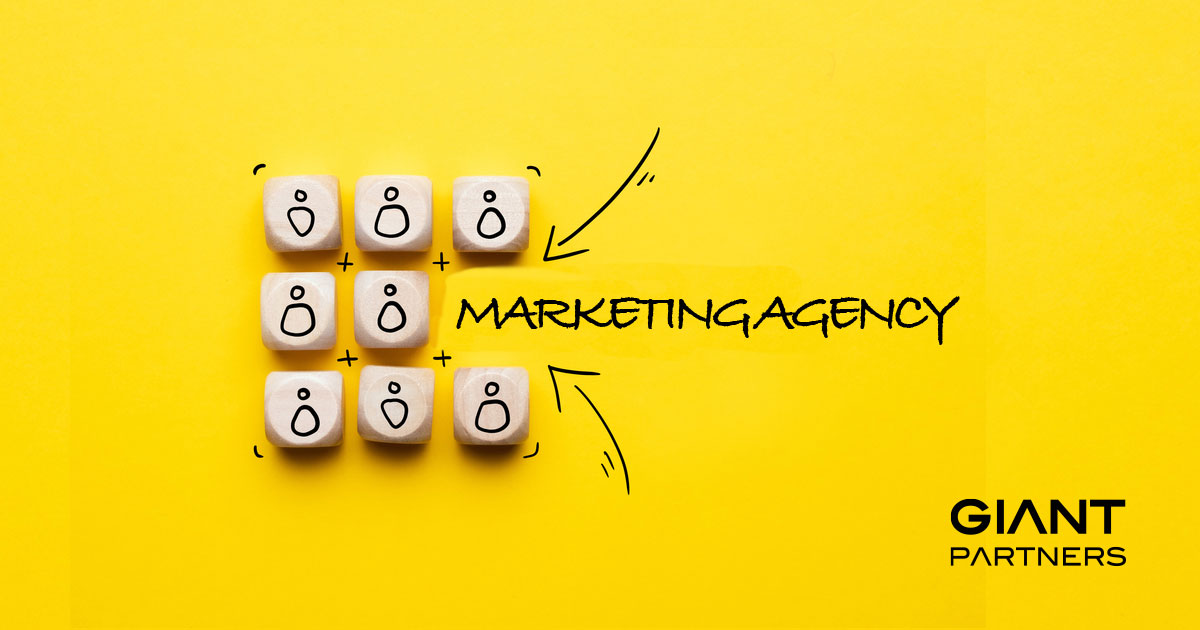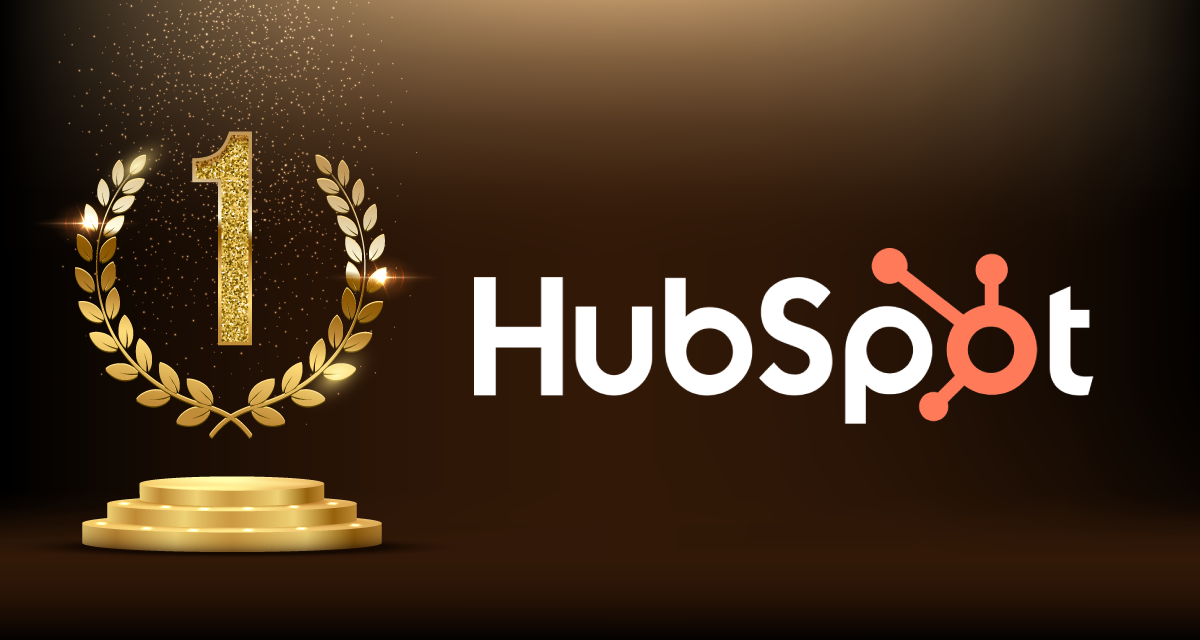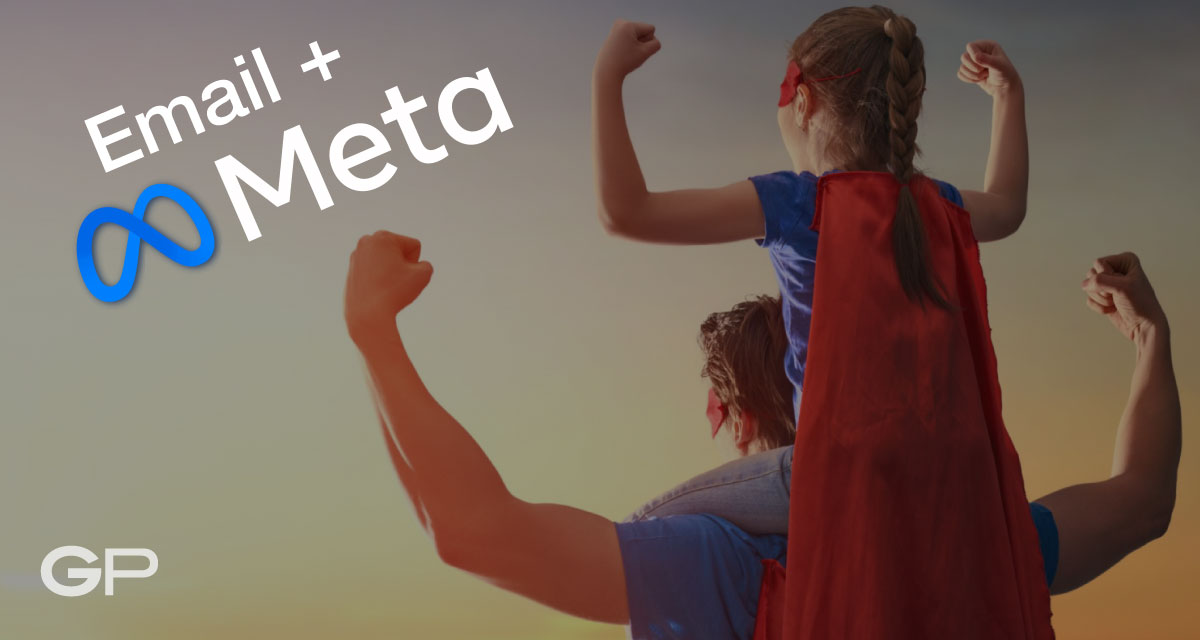
Updated January 2025
Digital marketing is connecting buyers and sellers. This basic understanding is essential for business owners to create and implement effective marketing campaigns that exceed short-term goals and drive long-term results.
As a marketer your job is to reach qualified leads with compelling calls-to-action that drive impressions, clicks and conversions. In 2025, conversions are connections that take many forms including web chats, inbound calls, reply emails, text message responses, and form submissions.
At the end of the day marketing at its core is all-about branding, promotions and customer retention. Here is a handy list of the most popular digital marketing tools (with helpful tips) and how you should be measuring the performance of your campaigns.
Use the links below to jump to the section of this article that is of most interest to you.
Google Adwords and Bing Ads
What marketers love most about web search advertising is that you can automatically attract leads that have buyer intent. Google has more than 90% of all web searches while Bing is prominent for some demographics and geographic areas.
Google Adwords is used to set up, optimize and track Google advertising campaigns:
Paid Search
Display Banners
YouTube Commercials
Gmail Inbox Ads
Bing Ads is used to set up, optimize and track Bing advertising campaigns:
Paid Search
Display Banners
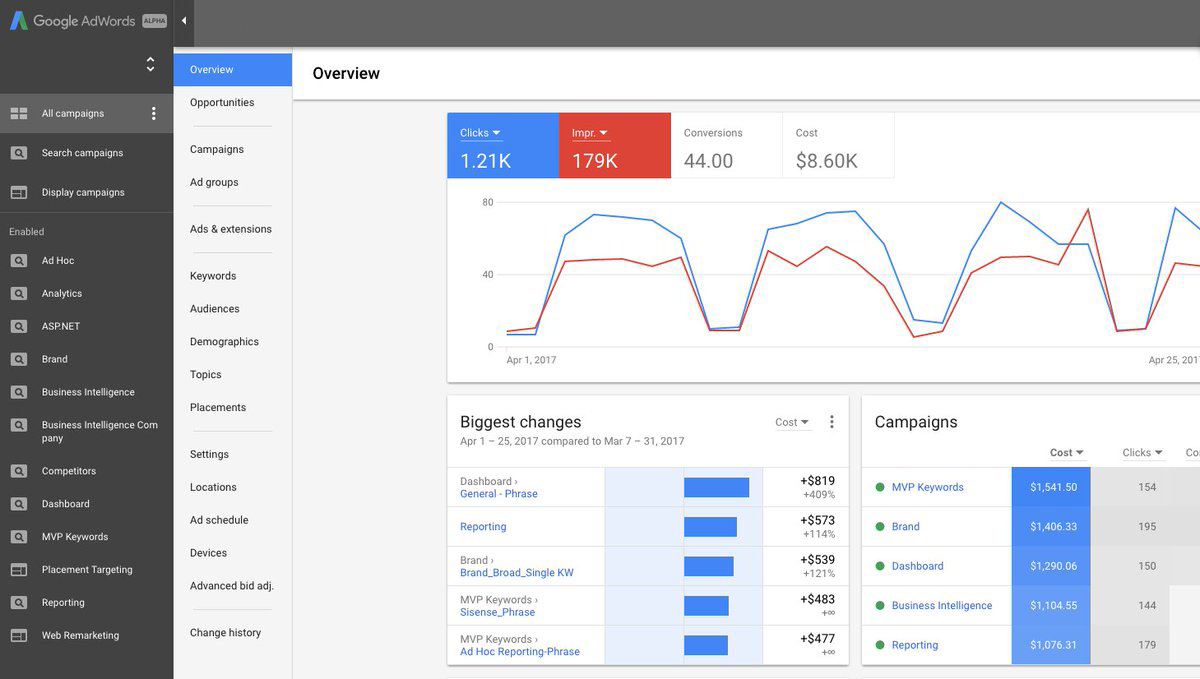
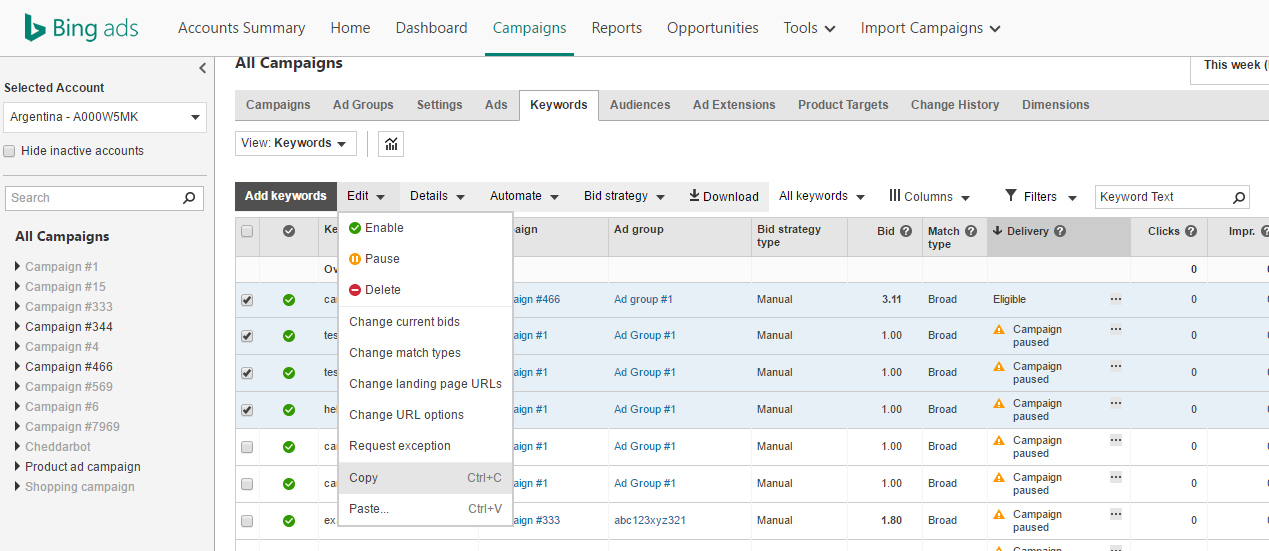
Track Google and Bing advertising metrics to ensure incremental growth:
- Cost-per-impression (How much it costs for someone to see your web search ad or retargeting banner/video)
- Cost-per-click (How much it costs for someone to click on your ad)
- Cost-per-lead (How much it costs for someone to fill out the form on your landing page)
- Grant allocation (Nonprofit marketing only)
- Total advertising spend (Once cost-per-lead goal is achieved campaigns can be scaled over time to grow your business)
“Cost-per-conversion” and “Cost-per-acquisition” are used synonymously with “Cost-per-lead” for companies that generate leads for sales teams and eCommerce.
Lower advertising costs and increase lead quality each month by:
- Iterating on custom audience data uploads for more precise targeting (50K all-time Google ad spend required)
- Adjusting ad scheduling (when and where you run your ads) and blend (ad combinations)
- Personalizing retargeting offers with videos and banner ads
Bing costs are often less than Google costs and Bing is a good alternative if your company has temporary/permanent billing or administrative issues within your Google account.
 Upload custom audience data with advanced selects like income and home value to increase lead quality. These lists allow you to pre-qualify every user that you pay to show your ad to.
Upload custom audience data with advanced selects like income and home value to increase lead quality. These lists allow you to pre-qualify every user that you pay to show your ad to.
Google Analytics
Google Analytics is used to measure overall website performance—set goals, measure conversions and track sources. Once you install the Google tracking pixel you can track everything every visitor does. Google Analytics must be properly configured before any digital marketing campaign can begin.

Track Google Analytics to ensure incremental website performance growth:
- Traffic (Unique visitors to your website)
- Bounce rate (Percentage of visitors that immediately abandon your site after page load)
- Time-on-site (Average length of time visitors spend on your website)
- Conversion rate (Example: Percentage of visitors that fill out a form and reach your thank you page)
Increase website performance each month by:
- Ensuring UX/UI (Website design user experience) improvements
- A/B testing and heat map tracking landing pages and conversion funnels
- Ensuring proper conversion tracking for all campaigns
- Passing conversion data directly into CRM for use
Traffic that is marked “Organic Search” is often a result of paid search and social media advertising. This happens because many customers will go directly to your website rather than a landing page that is part of your funnel.
 Every company should have their primary call-to-action button and phone number at the top right of website navigation. Make sure that these menu items do not hide on a mobile device.
Every company should have their primary call-to-action button and phone number at the top right of website navigation. Make sure that these menu items do not hide on a mobile device.
Email Platforms
Email is the primary method of communication for business professionals and continues to have the highest ROI of any marketing tool.
Warm email marketing platforms like Mailchimp, Hubspot and Constant Contact are used to send communications to individuals that have filled out a form on your website.
Cold email marketing platforms like Mailshake, Quickmail and Woodpecker are used to send communications to individuals that you have pre-qualified to buy your product but have not yet filled out a form on your website.
Every email marketing platform has dashboards that measure overall campaign performance.
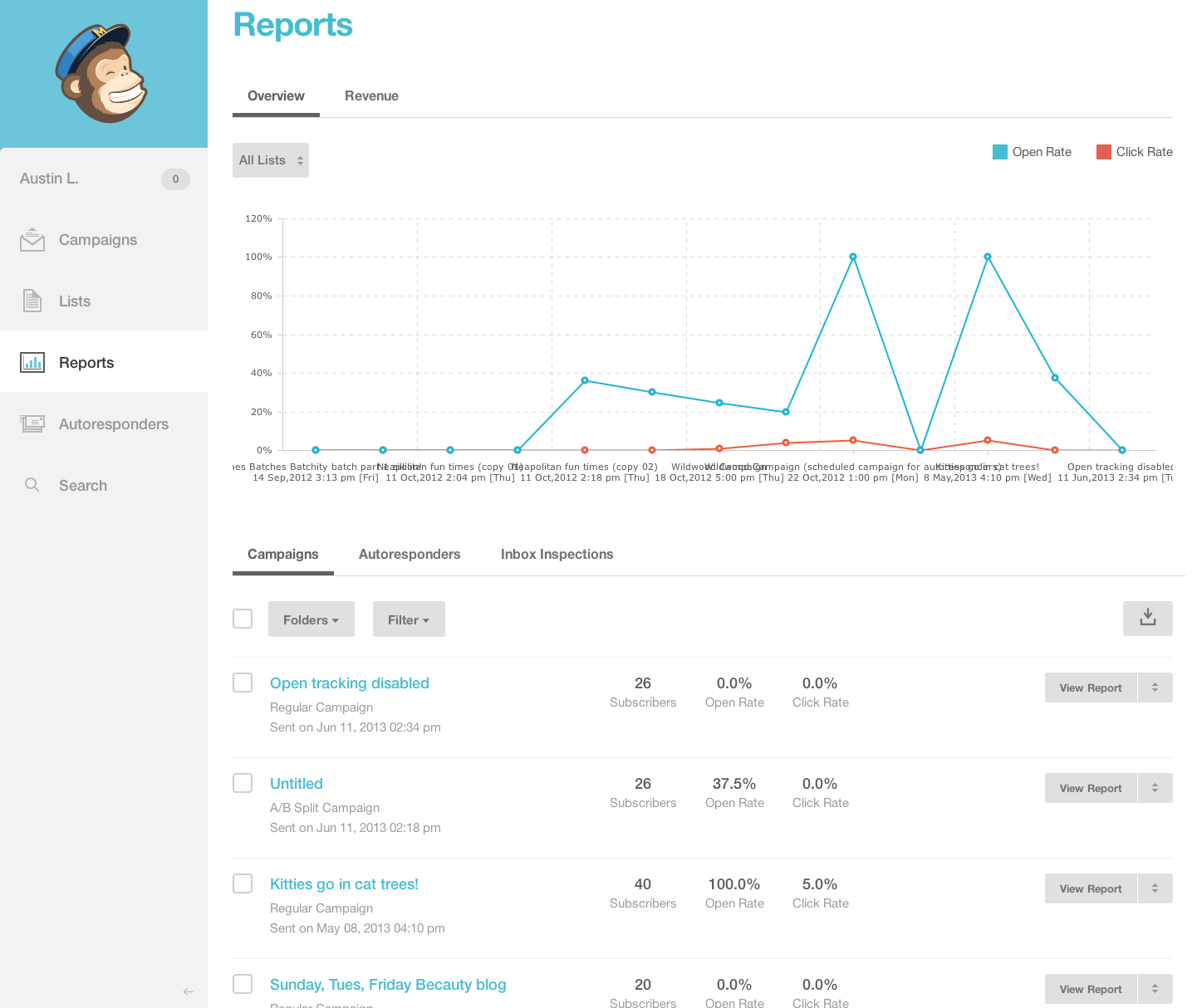

Track email marketing metrics to ensure incremental growth:
- Subscribers (Email addresses that received a message)
- Opens (Email addresses that opened a message)
- Clicks (Email addresses that opened and clicked a link in your message)
- Replies (Email reply messages—excluding auto-responders)
- Spam Complaints (Complaints indicate that the wrong message is being sent to your list)
- Hard Bounces (Bounces tell email service providers that you don’t practice good list hygiene)
High percentages of spam complaints and hard bounces damage IP and email domain reputation. This negatively effects overall message deliverability and often results in email marketing platform termination.
Increase email performance each month:
- Use a double opt-in process or use a verification service like BriteVerify, NeverBounce, or EmailOversight to validate lists
- Keep email sending subdomains and IP reputation in good standing
- Use cold email marketing services to send drip communications
- Add new subscribers to warm email platforms as they engage with cold email campaigns
- Send mobile-friendly and optimized content on a regular schedule to subscribers
- Send messages that do not include spammy terms (especially for cold email)
- Drip cold email as slow as possible from a member of your team
- A/B test subject lines, call-to-actions and formats
Email marketing services like Mailchimp, Hubspot and Constant Contact do not allow you to send email to 3rd party lists because of the likelihood of high bounce rates and complaints that can hurt their email sending IP reputation. If someone responds to your cold email campaign you should move them into your warm email marketing platform.
 Be consistent with your email marketing schedule. This dramatically increases inboxing and response rates. Try to keep emails brief and helpful with a clear and concise call-to-action.
Be consistent with your email marketing schedule. This dramatically increases inboxing and response rates. Try to keep emails brief and helpful with a clear and concise call-to-action.
Meta Ad Manager
Inside your Meta Ad Manager account you can create, implement and manage advertising campaigns for Facebook, Instagram, Messenger, WhatsApp and more.
Marketers love social media advertising because it is often the most cost-effective way to create brand awareness, drive lead volume, and convert online sales. Facebook is prominently used by Baby Boomers while Instagram is more often used by GenXers and Millennials.
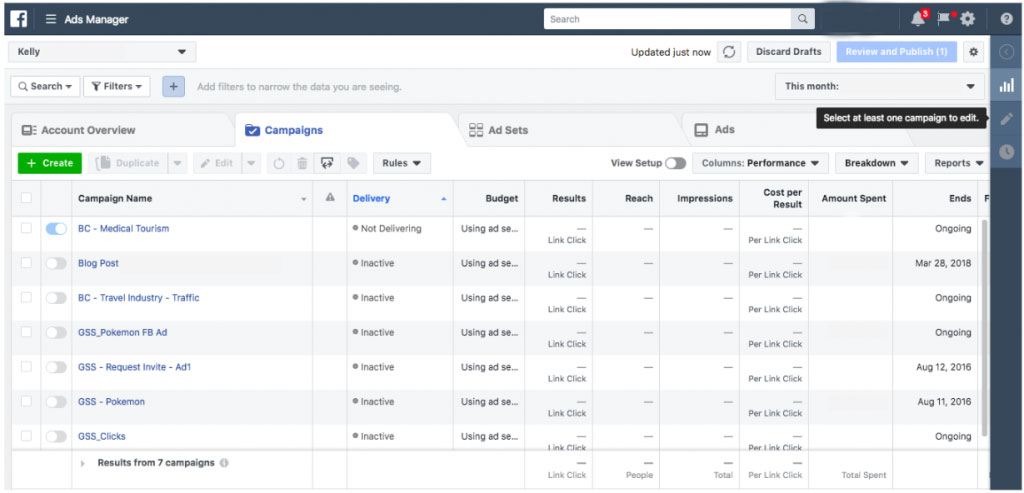
Track Meta Ad Manager metrics to ensure incremental social media advertising growth:
- Cost-per-impression (How much it costs for someone to see your ad in their feed)
- Cost-per-click (How much it costs for someone see and click on your ad in their feed)
- Cost-per-conversion (How much it costs for someone to see, click and fill out your lead form)
- Total advertising spend
“Cost-per-lead” and “Cost-per-acquisition” are used synonymously with “Cost-per-conversion” for companies that generate leads for sales teams and eCommerce.
Increase lead quality and lower advertising costs each month by:
- Iterating on custom audience data uploads for more precise targeting (No all-time Facebook ad spend required)
- Adjusting ad spend scheduling (when and where you run your ads) and blend (channel and ad type combinations)
- Personalized offers with text, image and video retargeting ads
- Convert high-performing organic posts to paid ads (this is better than simply “boosting” your posts)
Facebook/Instagram lead costs can be as low as 1/10 of paid web search costs when free content is promoted. Lead follow up techniques must be adjusted because most social media leads have not yet expressed buyer intent.
 Use Facebook forms to dramatically lower costs. Users don’t have to leave Instagram or Facebook environment to fill out your form and their name, email and mobile number automatically appear.
Use Facebook forms to dramatically lower costs. Users don’t have to leave Instagram or Facebook environment to fill out your form and their name, email and mobile number automatically appear.
Facebook Analytics and Instagram Insights
Facebook Analytics and Instagram Insights allow companies to track overall social media performance across channels.
Facebook and Instagram company profiles are typically the first place customers look for social proof when researching brands (to see if real people actually like your products and services). Social proof is most often judged on how many followers you have and the relevance, date and social engagement (likes, comments, shares) of your last few posts.
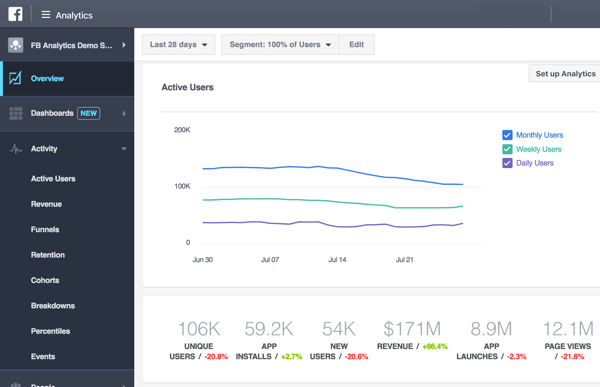
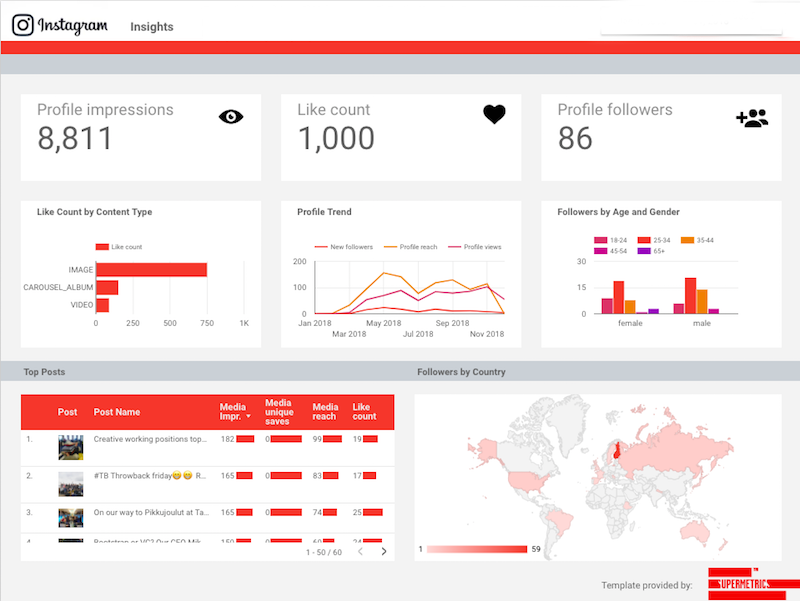
Track Facebook and Instagram metrics to ensure incremental social media growth:
- Impressions (How many people see your content/pages)
- Likes (How many people like your content)
- Comments (How many people comment on your content)
- Followers (How may people follow your pages)
Increase social media engagement each month by:
- Creating live videos (going live) on Facebook and Instagram regularly
- Posting helpful and or entertaining content as often as possible
- Updating profile avatars, images and videos often
- Networking with individuals (You like/follow them, they like/follow you)
- Promptly managing replies and comments
Healthy and well managed Facebook and Instagram pages are essential for effective social media advertising. This is due to the fact that many people will see your ad and go to your page directly. If your page is outdated or boring most users will tune out your campaign no matter how hard you try to target them.
 Re-create and promote high performing organic posts as ads within your Facebook Ad Manager account for extended reach, engagement and overall social media performance.
Re-create and promote high performing organic posts as ads within your Facebook Ad Manager account for extended reach, engagement and overall social media performance.
Live Web Chat and Chatbot Automation
Chat the fastest growing source of leads and customer engagement. More than ever before individuals are adverse to filling out online forms and speaking on the phone. These two primary objections can be overcome with live web chat and automated chatbot solutions.
Live web chat is found on your website and immediately connects website visitors with live reps.
Chatbots are configured with Q&A style automated messages that qualify prospects and connect them with reps.
(See Intercom and ManyChat platform examples below)
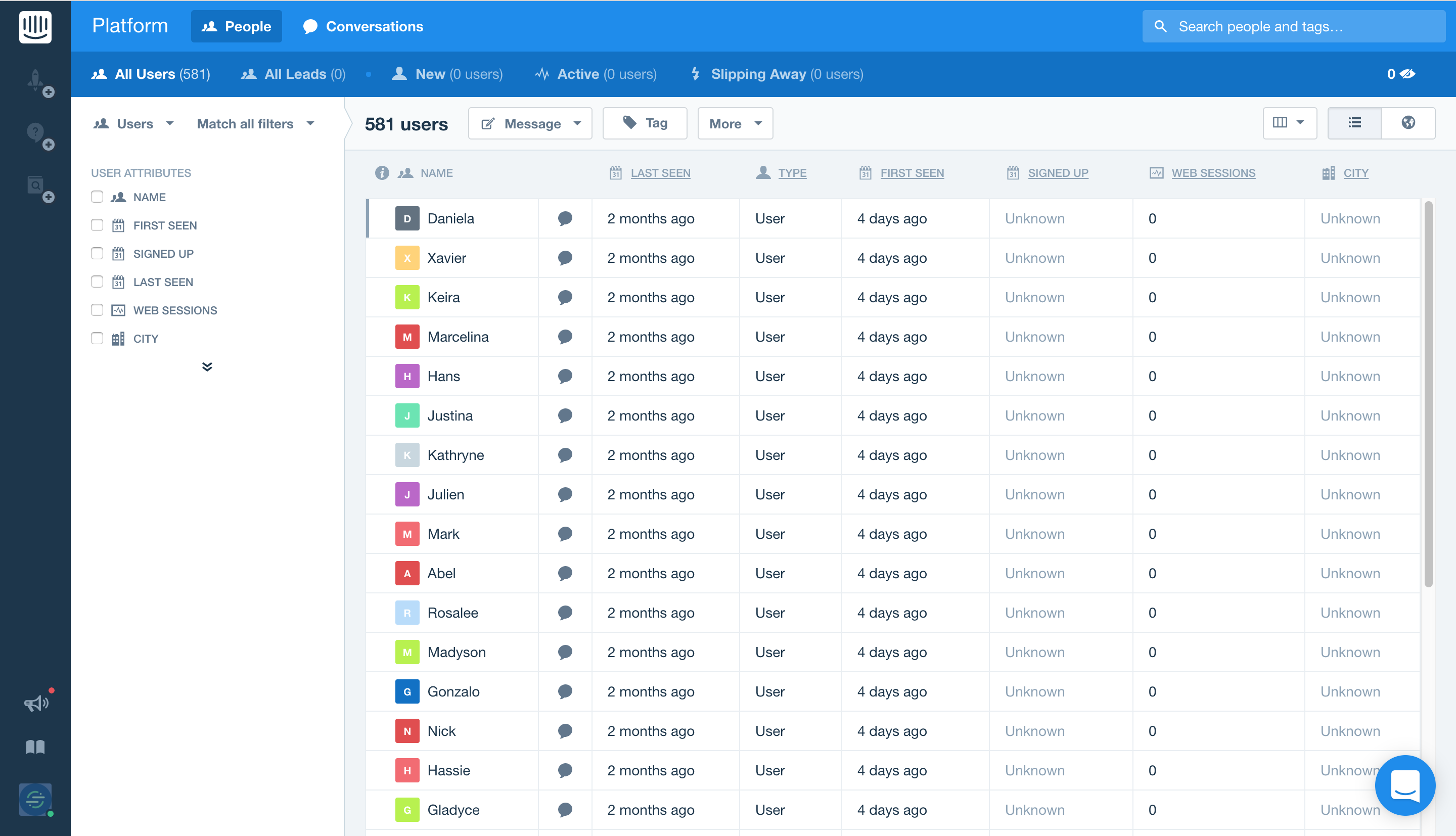
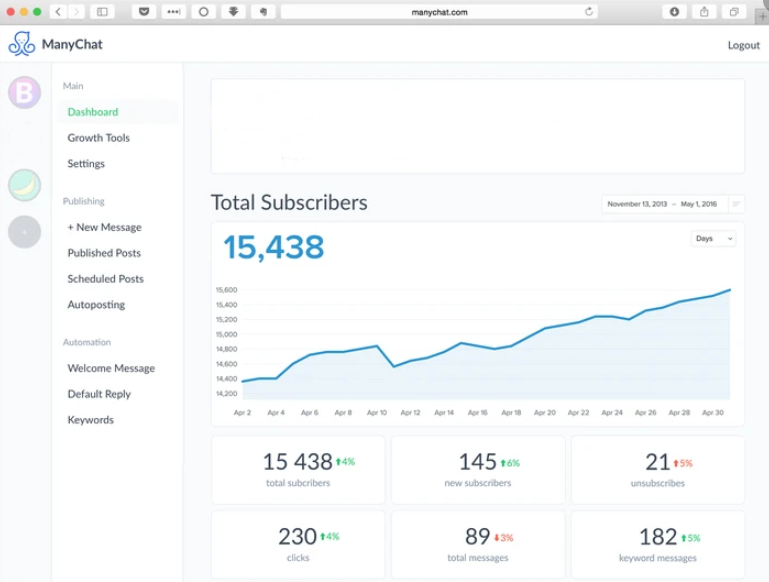
Track live web chat metrics to ensure incremental customer engagement on your website:
- Total number of conversations (Unique chats)
- Response time (How quickly chats are responded to)
- Average length of conversation (Time to close)
- Conversation score (Scores are voluntarily left by customers post chat)
Increase lead generation and opportunities each month by:
- Training reps to be helpful rather than salesy
- Training reps to share content links to answer FAQs
- Ensuring reps to use calendar links to automatically book appointments
- Passing collected customer data conveniently into CRM for use
Customers on your website should be encouraged to chat as a first point of contact. For many online companies more than 50% of all new leads start as live chats.
Track chat bot metrics to ensure incremental Facebook Messenger reach:
- Total subscribers
- New subscribers
- Clicks
Facebook Messenger managers increase lead generation each month with:
- Chatbot automations that answer FAQs about your company
- Chatbot automations that lower CPL (Cost-per-lead)
- Fun and interactive chat experiences that capture customer data for segmented communications
- Customer data collection that passes directly into CRM for use
Facebook Messenger subscribers can receive company and product notifications that push to the lock screen of their phone. Unlike standard text messages, Facebook Messenger push notifications are TCPA compliant.
 Incorporate live chat and chatbot technology into every component of your business. This will allow you to provide instant feedback to customers and build relationships faster than ever before.
Incorporate live chat and chatbot technology into every component of your business. This will allow you to provide instant feedback to customers and build relationships faster than ever before.
X Ad Manager and Analytics
Like it or not we live in a tweet-sized digital marketing world.
X (Formerly) Twitter Ad Manager is a standalone advertising platform that is used to target customers, manage campaigns and track performance for paid advertisements that appear in Twitter feeds.
X Analytics is used to track organic and paid Twitter performance for companies and individuals.
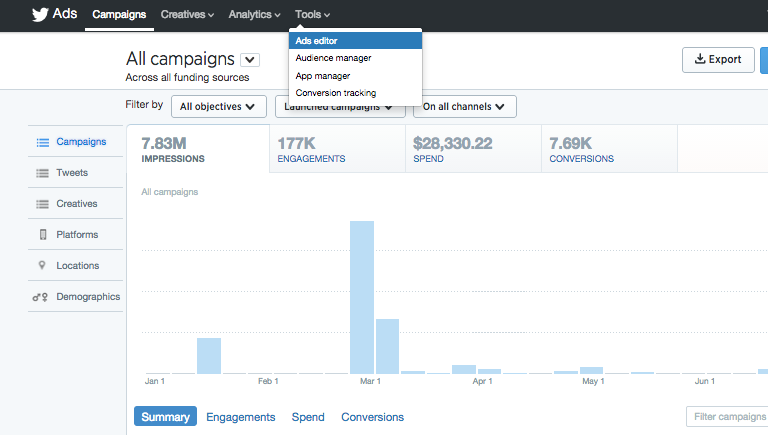
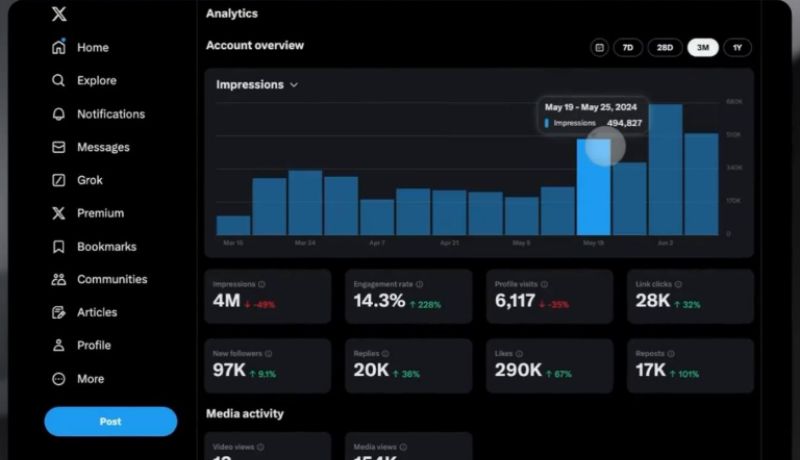
Track X Ad Manger metrics to ensure incremental advertising growth:
- Cost-per-impression (How much it costs for someone to see your ad in Twitter)
- Cost-per-click (How much it costs for someone engage with your ad in Twitter)
- Cost-per-conversion (How much it costs for someone to fill out your lead form)
- Total advertising spend
Track X Analytics to ensure incremental Twitter growth:
- Number of Impressions
- Number of Retweets
- Number of Replies
- Number of Followers
Increase engagement and lower X costs each month by:
- Iterating on custom audience data uploads for more precise targeting (No all-time Twitter ad spend required)
- Adjusting ad scheduling (when and where you run your ads) and blend (ad combinations)
- Targeting the followers of your competitors and important industry influencers
- Targeting lists of uploaded Twitter handles and hashtags
 Every company should strengthen Twitter communications with paid advertising to increase customer engagement. Remember, unlike any other social media platform, Twitter allows you to directly target customers that follow your competitors and upload lists of customer handles.
Every company should strengthen Twitter communications with paid advertising to increase customer engagement. Remember, unlike any other social media platform, Twitter allows you to directly target customers that follow your competitors and upload lists of customer handles.
LinkedIn Ad Manager and Analytics
Linkedin is the world’s largest online network of company and business professional profiles. Individuals can be directly targeted with B2B and B2C advertising campaigns. Linkedin profiles are typically kept up to date because these pages are the modern version of a traditional resume and cover letter (for employees) and job listing (for employers).
Many companies also empower employees with InMail (paid Linkedin accounts) which empower reps to send personal messages (via the Linkedin messenger network) to leads.
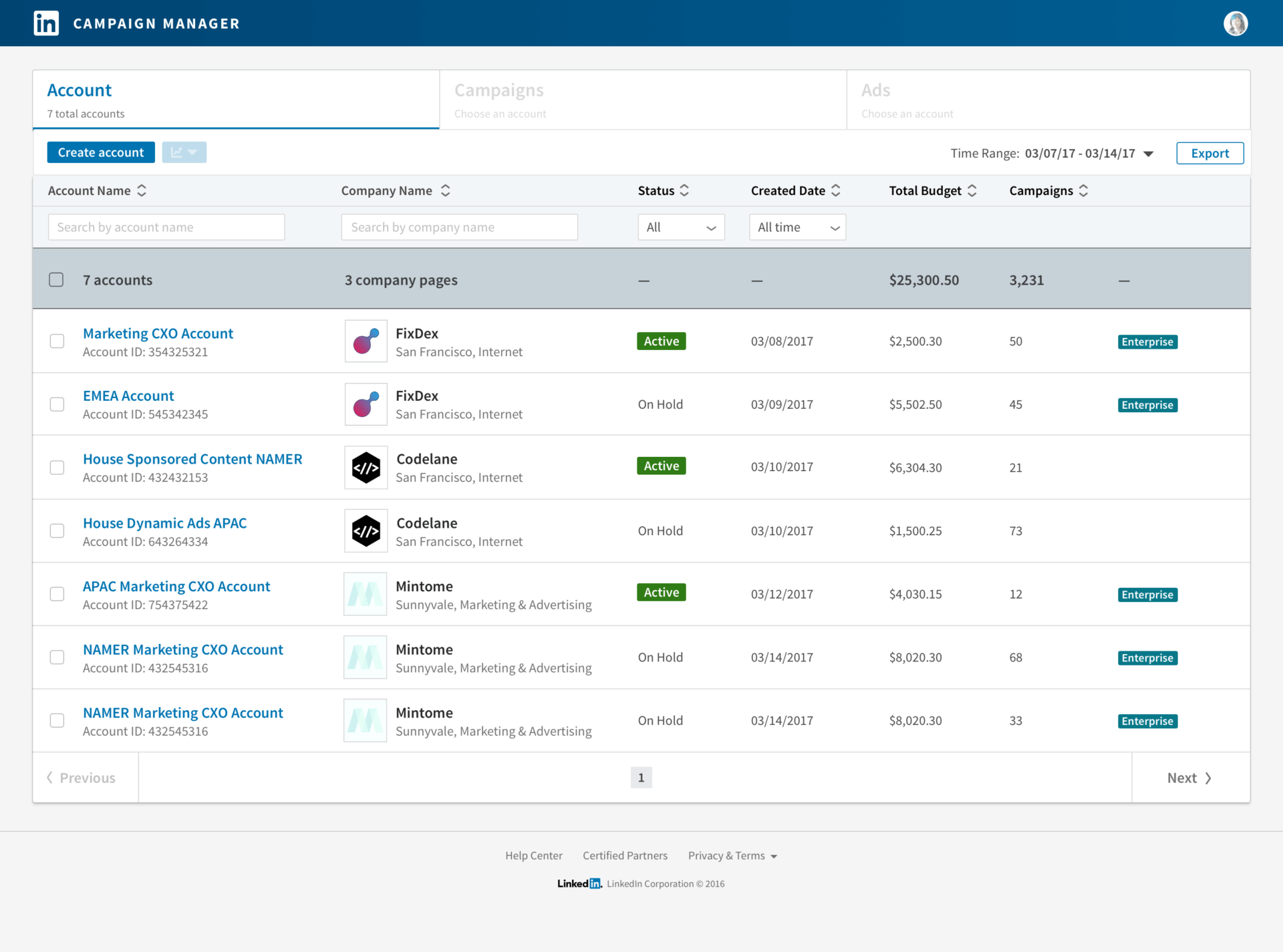

Track Linkedin Ad Manger metrics to ensure incremental advertising growth:
- Cost-per-impression (How much it costs for someone to see your ad in Linkedin)
- Cost-per-click (How much it costs for someone engage with your ad in Linkedin)
- Cost-per-conversion (How much it costs for someone to fill out your lead form)
- Total advertising spend
Track Linkedin Analytics to ensure incremental Linkedin growth:
- Number of Impressions
- Number of Comments
- Number of Shares
- Number of Clicks
- Number of Followers
Increase engagement and lower Linkedin costs each month by:
- Providing clear instructions for all employees to like, share and comment on all newly posted content
- Invite all employees to connect with your company and ensure that their profiles are up-to-date
- Ensuring that team members are (and know how to) connect with new and existing customers as often as possible
- Adjusting ad spend scheduling (when and where you run your ads) and blend (ad type combinations)
- Targeting followers of competitors, important industry influencers, keywords and groups.
 Every B2B campaign (and most B2C) should incorporate an element of Linkedin marketing. Linkedin is often the first place that employees and customers will look when considering your company because your Linkedin company page shows up just under your website in Google search results.
Every B2B campaign (and most B2C) should incorporate an element of Linkedin marketing. Linkedin is often the first place that employees and customers will look when considering your company because your Linkedin company page shows up just under your website in Google search results.
Conclusion
Your customers are connecting with companies everyday and all-the-time across online channels at work, home and play.
Every modern marketer should have a working knowledge each digital marketing tool:
- Google Adwords
- Bing Ads
- Google Analytics
- Email Marketing (Subscribers)
- Email Broadcasting (Outreach Prospecting)
- Meta Ad Manager
- Meta Analytics
- Meta Insights
- X Ad Manager
- X Analytics
- Linkedin Ad Manager
- Linkedin Analytics
- Live Web Chat
- Chatbot Automation
Each platform listed above has a unique login and requires a special set of skills to set up, manage and optimize.
All communications should be tailored for each format and incorporated into an integrated content marketing strategy. When individuals interact with your brand across multiple channels they are 4X more likely to convert.
Online videos and tutorials (like this one) make it possible for marketers to understand and master each platform. That being said it is often cheaper (and much faster) to outsource your digital marketing to an agency that has team members that specialize in each specific discipline. In many cases, all of the digital marketing responsibilities listed above can be efficiently outsourced for the price of a single marketing employee.
